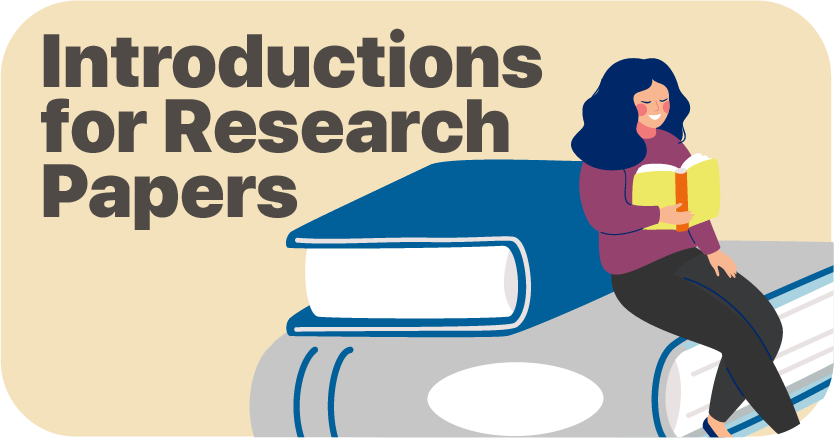Writing a good conclusion section for a research paper is an important part of the writing process. A conclusion should summarize the main points of the paper and provide a final perspective on the topic. It should also provide a sense of closure and leave the reader with a lasting impression. In this article, we will discuss the key elements of a good conclusion section and provide tips on how to write a strong conclusion for your research paper.
5 Tips for Crafting an Engaging Conclusion for Your Research Paper
1. Summarize the main points of your research paper: Provide a brief overview of the main points of your research paper, highlighting the key findings and conclusions.
2. Connect the conclusion to the introduction: Make sure to connect the conclusion to the introduction of your paper, so that the reader can see the progression of your argument.
3. Offer a solution or recommendation: If applicable, offer a solution or recommendation based on the research you have conducted.
4. Make a call to action: Encourage the reader to take action based on the research you have presented.
5. Leave the reader with something to think about: End your paper with a thought-provoking statement or question that will leave the reader with something to ponder.
How to Summarize Your Research Paper’s Findings in the Conclusion
In the conclusion of a research paper, it is important to summarize the findings of the research in a concise and clear manner. The conclusion should provide a brief overview of the main points discussed in the paper, as well as the implications of the research. It should also provide a summary of the research methods used and the results obtained. Additionally, the conclusion should provide a brief discussion of the implications of the research for future research and practice. Finally, the conclusion should provide a brief summary of the overall conclusions of the research paper. By summarizing the findings of the research paper in the conclusion, readers will be able to quickly and easily understand the main points of the paper.
How to Use the Introduction and Conclusion to Tie Your Research Paper Together
The introduction and conclusion of a research paper are two of the most important components of the paper. The introduction serves to introduce the topic of the paper and provide the reader with an overview of the paper’s main points. The conclusion serves to summarize the main points of the paper and provide the reader with a sense of closure. By tying the introduction and conclusion together, the writer can create a cohesive and unified paper.
To tie the introduction and conclusion together, the writer should begin the introduction by introducing the topic of the paper and providing an overview of the main points. The writer should then use the conclusion to reiterate the main points of the paper and draw the reader’s attention back to the introduction. The writer should also use the conclusion to provide a sense of closure and to emphasize the importance of the paper’s main points.
The writer should also use language in the introduction and conclusion that is similar in tone and style. This will help to create a unified paper and will make it easier for the reader to follow the paper’s argument. The writer should also use transitions between the introduction and conclusion to help the reader move from one section to the other.
Finally, the writer should use the introduction and conclusion to provide the reader with a sense of closure. The conclusion should provide the reader with a sense of satisfaction and should leave the reader with a feeling that the paper has been successfully completed. By tying the introduction and conclusion together, the writer can create a unified and cohesive paper that is easy to follow and understand.
How to Avoid Common Mistakes When Writing a Research Paper Conclusion
1. Avoid summarizing the entire paper. The conclusion should be a brief summary of the main points of the paper, but it should not be a repetition of the introduction.
2. Avoid introducing new information. The conclusion should be a synthesis of the ideas presented in the paper, not a place to introduce new ideas or evidence.
3. Avoid making broad generalizations. The conclusion should be specific and focused on the evidence presented in the paper.
4. Avoid making unsupported claims. The conclusion should be based on the evidence presented in the paper, not on personal opinion or speculation.
5. Avoid using overly dramatic language. The conclusion should be written in a formal, academic tone.
6. Avoid making sweeping statements. The conclusion should be focused on the evidence presented in the paper, not on broad, sweeping statements.
7. Avoid using clichés. The conclusion should be original and creative, not a repetition of common phrases or ideas.
How to Make Your Research Paper Conclusion Stand Out from the Crowd
1. Summarize the main points of your research paper: Make sure to include the main points of your research paper in your conclusion. This will help to remind the reader of the main points of your paper and will help to tie the conclusion to the rest of the paper.
2. Offer a solution or recommendation: If your research paper has identified a problem or issue, offer a solution or recommendation in your conclusion. This will help to make your conclusion stand out from the crowd and will show the reader that you have thought through the implications of your research.
3. Make a call to action: If your research paper has identified an issue or problem, make a call to action in your conclusion. This will help to make your conclusion stand out from the crowd and will show the reader that you are passionate about the issue and want to make a difference.
4. Use strong language: Make sure to use strong language in your conclusion. This will help to make your conclusion stand out from the crowd and will show the reader that you are confident in your conclusions.
5. Use a quote: If appropriate, use a quote in your conclusion. This will help to make your conclusion stand out from the crowd and will show the reader that you have thought deeply about the issue.
Conclusion
A good conclusion section for a research paper should summarize the main points of the paper, provide a brief overview of the research findings, and offer a final thought or opinion on the topic. It should also provide a sense of closure and leave the reader with a lasting impression. The conclusion should be concise and clear, and should not introduce any new information. By following these guidelines, you can ensure that your conclusion section is effective and well-written.
Discussion
[wpaicg_chatgpt]



